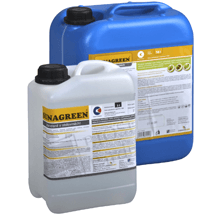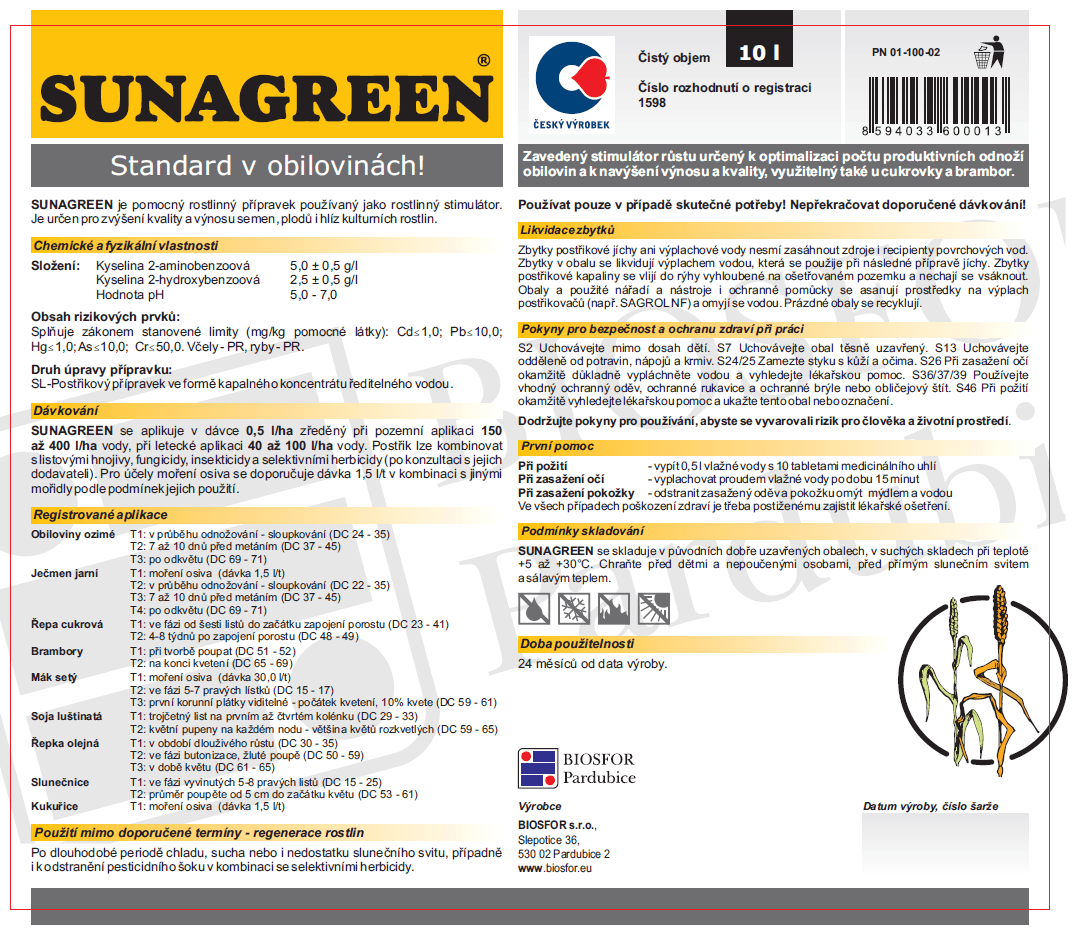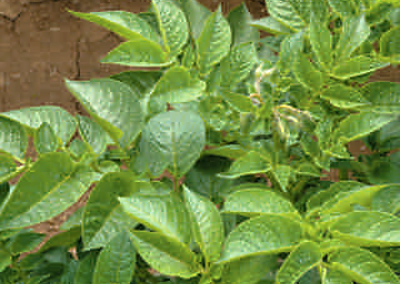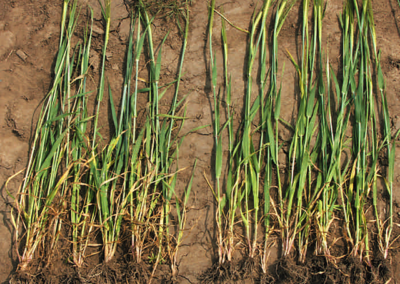Sunagreen – plant development and growth stimulator
Intended use: spring barley, winter cereals, rapeseed, potatoes, sugar beet, sunflowers, soybean, opium poppy

The Sunagreen spray can be combined with foliar fertilisers, fungicides, insecticides and selective herbicides (after a consultation with their suppliers). The product can also be used outside the recommended periods for plant regeneration after a prolonged period of cold, drought or even lack of sunshine. All Biosfor products are patent-protected and boast the Czech Product label.
Are you interested in ordering Sunagreen?
Packaging
- 3 and 10l PE jerrycans
Active ingredients
- 2-aminobenzoic acid
- 2-hydroxybenzoic acid
Dosage
- 0,5 l/ha in 150–400 l of water/ha (40–100 l of water/ha in aerial application)

Recommended registered applications
- Positive effect on the size of tubers
- Stimulation of yield and quality
- Increase in starch content
T1: During bud formation (DC 51-52)
T2: At the end of flowering (DC 65-69)
- Strengthening and straightening of tillers
- Stimulation of yield and quality
T1: During tillering – jointing (DC 22–35)
T2: 77 to 10 days before heading (DC 37–45)
T3: After the end of flowering (DC 69–71)
- Straightening of tillers
- Reduction of nitrogenous substances
- Stimulation of yield and quality
T2: 7 to 10 days before heading (DC 37–45)
T3: After the end of flowering (DC 69–71)
- Stimulation of yield and quality
- Increase in the yield of white sugar
T1: Starting at the stage of 6 leaves until the beginning of the closure of the crop canopy (DC 23–41)
T2: 4–8 weeks after the closure of the crop canopy (DC 48–49)
- Stimulation of yield and quality
T1: In the elongation phase (DC 30–35)
T2: During the bud formation stage, yellow bud stage (DC 50–59)
T3: During flowering (DC 61–65)
- Stimulation of yield and quality
T2: Bud diameter of 5 cm until the start of flowering (DC 53–61)
- Increase in the height of the lowest pod
- Stimulation of yield and quality
T2: Flower buds on each node – most flowers in bloom (DC 59–65)
- Accelerated regeneration after the application of herbicides
T2: The first corolla petals are visible – 10% is flowering (DC 59–61)

